Inca Gadda Da Vida
After a long day to Abancay, and a short day after, I decided to postpone patching the tubes until the morning, rather than doing it the same evening like I usually do. Got a slightly late start, but no problem, really.
To get out of Abancay, I had to climb. A lot. The weather changed, getting colder and cloudier as I went. The views were nice.
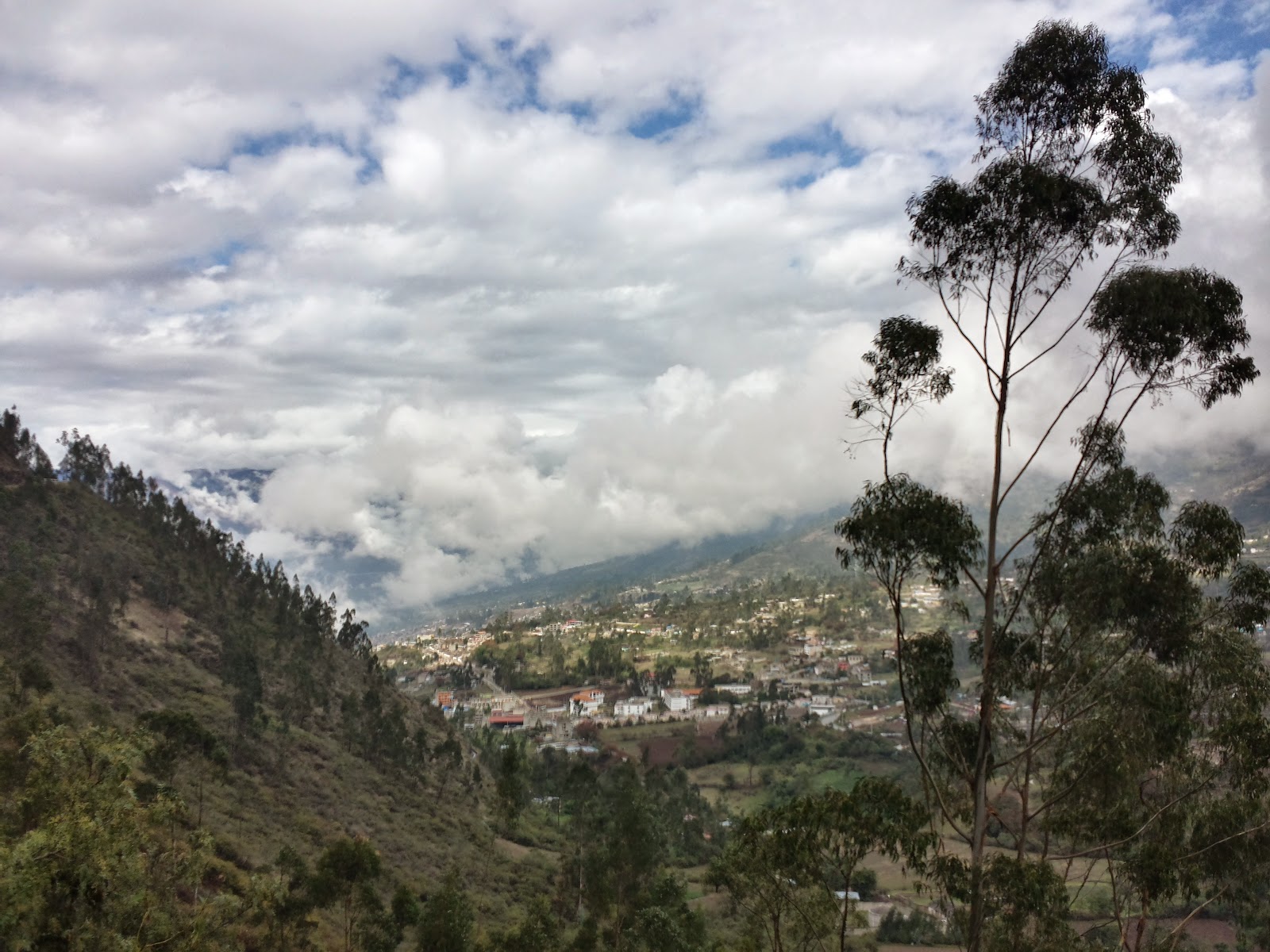
After two and a half hours of climbing, I found a couple guys on mountain bikes. Nice ones! I figured a cyclist would actually know how far away the top of the hill was, and would have the decency to give an honest answer, so I stopped to ask them how much farther.
"Four km!"
"Oh, so it is close? Four km and no more?"
"No more!"
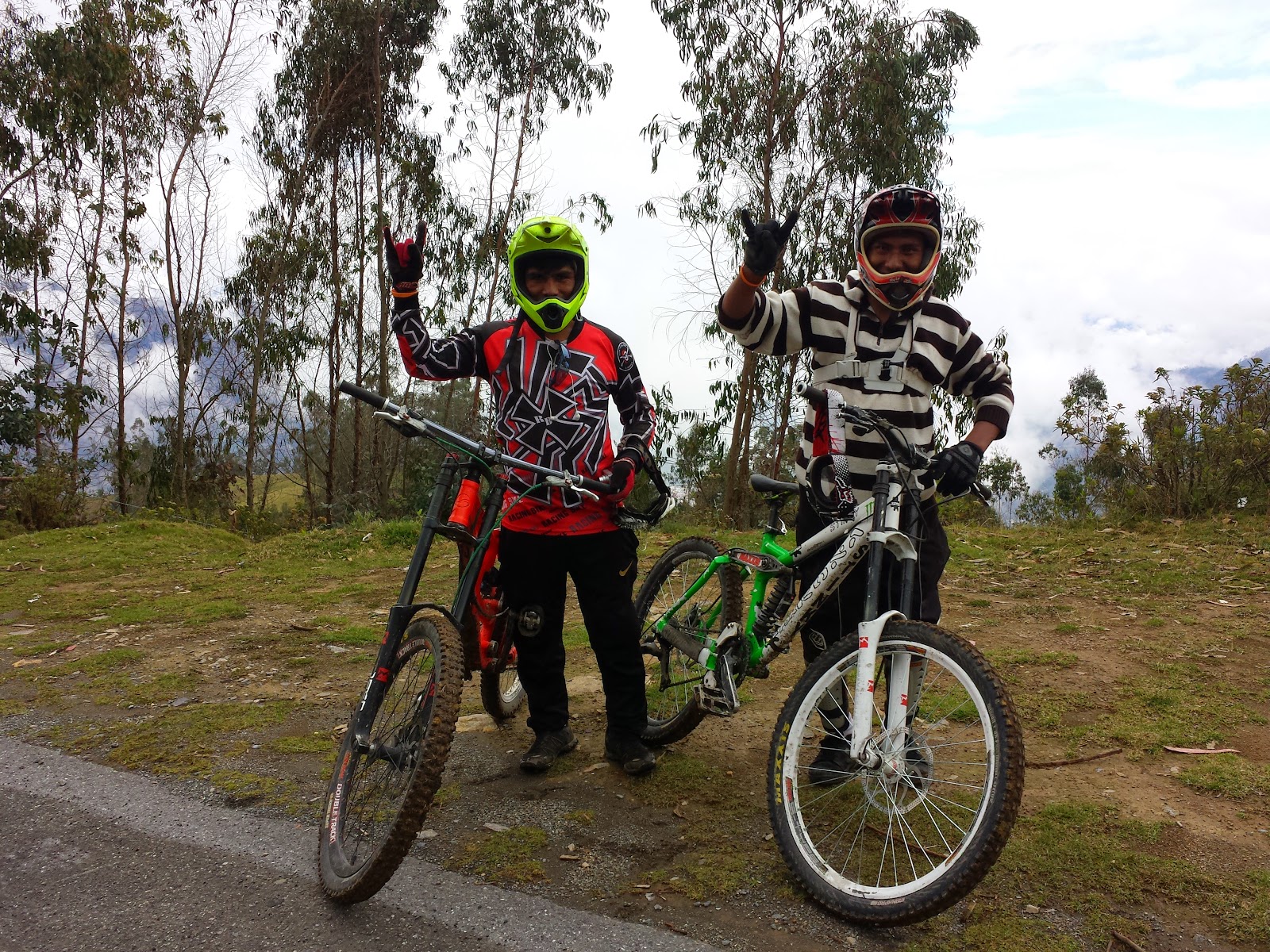
We talked for little while longer, mostly about biking. They had taken a van from Abancay to the top of the hill and were going to ride back down. I gave them a couple wristbands and as I headed up, they headed down, not on the road, but on a trail that I hadn’t noticed. I thought the road was steep enough. The trail was to the point that they might as well have run to the edge and jumped. But they were wearing full protective gear and had downhill-specific mountain bikes, so I suppose they knew what they were doing!
It turned out to be eight km to the top, not four (of course). Maybe it was four the way they were going, no switchbacks. After that, A downhill. A 50 km downhill.
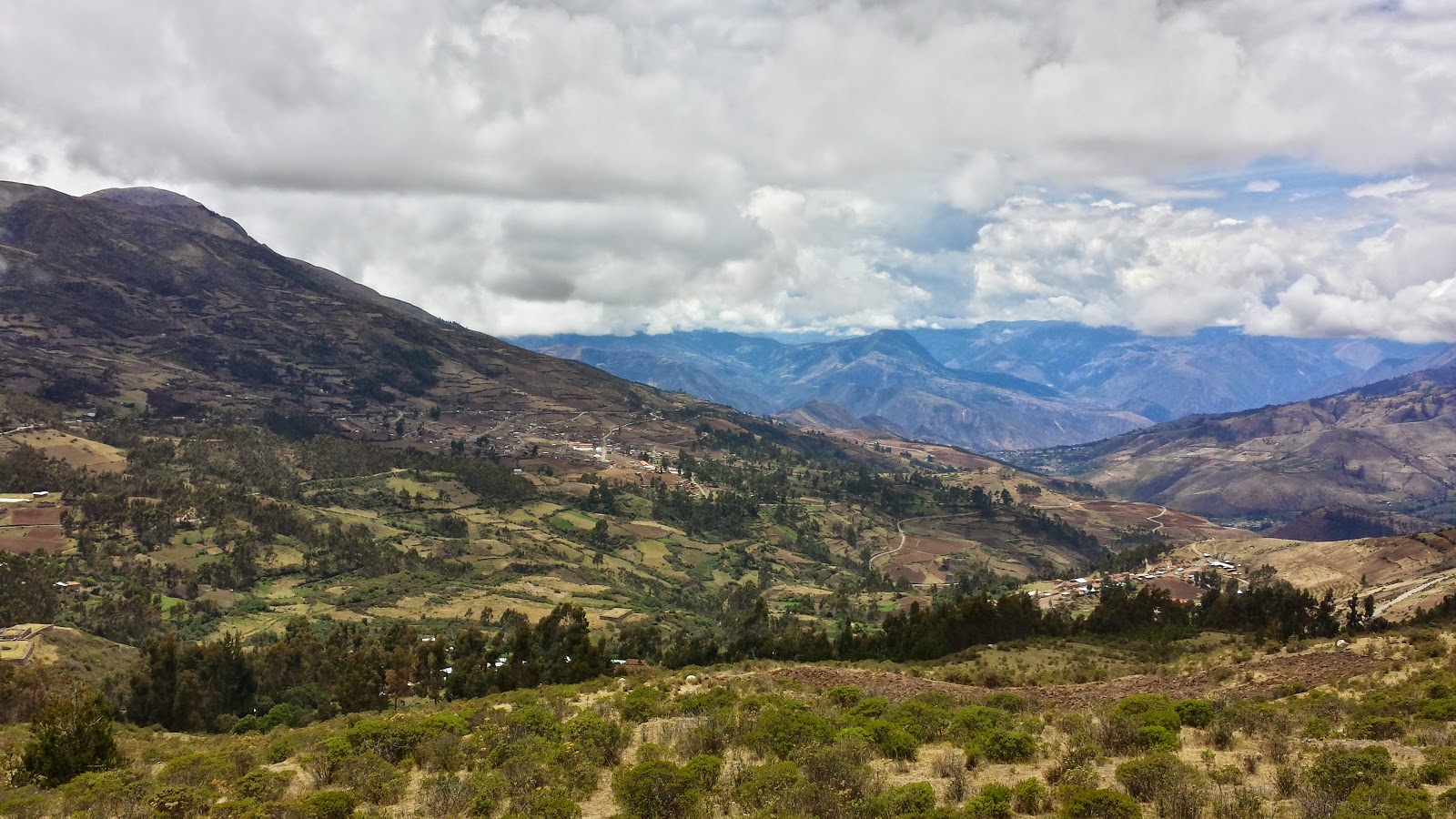
I’ve never seen anything like it. After coasting for almost two hours, I was almost getting angry, because I knew this would only lead to doing another hill like the one I’d done that morning. I’d rather have it level out and keep going.
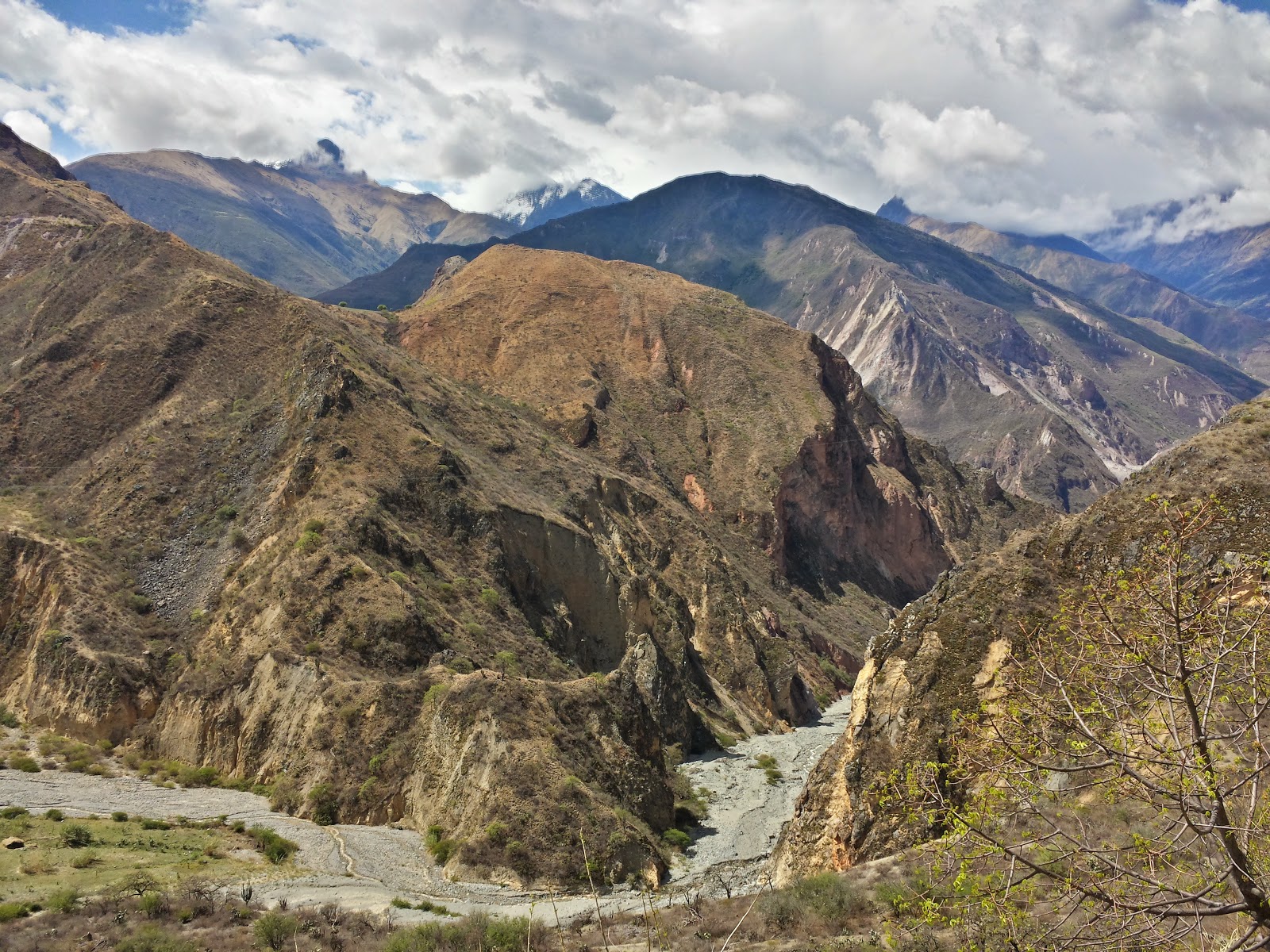
I finally reached the bottom, where I crossed a bridge and started heading uphill right away. Only a little later, the road ceased being paved, with varying quality of surface.
After half an hour of this, the road turned into mud, where a construction crew was working on something. I figured I would ask how far it was until the road was paved again.
"How many more kilometers and the road is smooth?" (I don’t know the Spanish word for paved).
"Two."
"Only two? Two and no more?"
"Yes, two."
"So if the road is not smooth in two km, you are not honest?"
"No, no, only two km"
It was fifteen. Riding on the crappy road didn’t bother me as much as the fact that everyone felt the need to lie about it.
I made it to a small town that had a couple places to stay, but I decided I’d like to get another 5-10 km of climbing in so I could break up what was probably a climb as long as the descent I’d had earlier in the day. I´d rather not have to do most of it all at once in the morning.
Just as I was leaving town, I came across six people hanging around outside a house.
"Do you know a good place where I can use my tent?"
"You should go to the ruins, that way." They pointed back where I was coming from.
"I saw the ruins earlier. I need a place to sleep, and I’m going that way."
“Sleep at the ruins!”
“It is permitted?”
“Yes, I am a police officer. I can take you there.”
But first, they offered me a beer. I couldn’t turn it down.
Spanish was their second language, Quechua was their first (Spanish is my third). I hung out with them, talking about my ride, the incredible mountains in the area, Incans, and drank some more beer with them.
"This beer, Cusquena, it is made by Incans. The Incans were strong, they cut rocks and moved them, and you need to be strong like them."
"So I drink this beer and I am strong?"
"Yes, exactly!"
I like these folks.
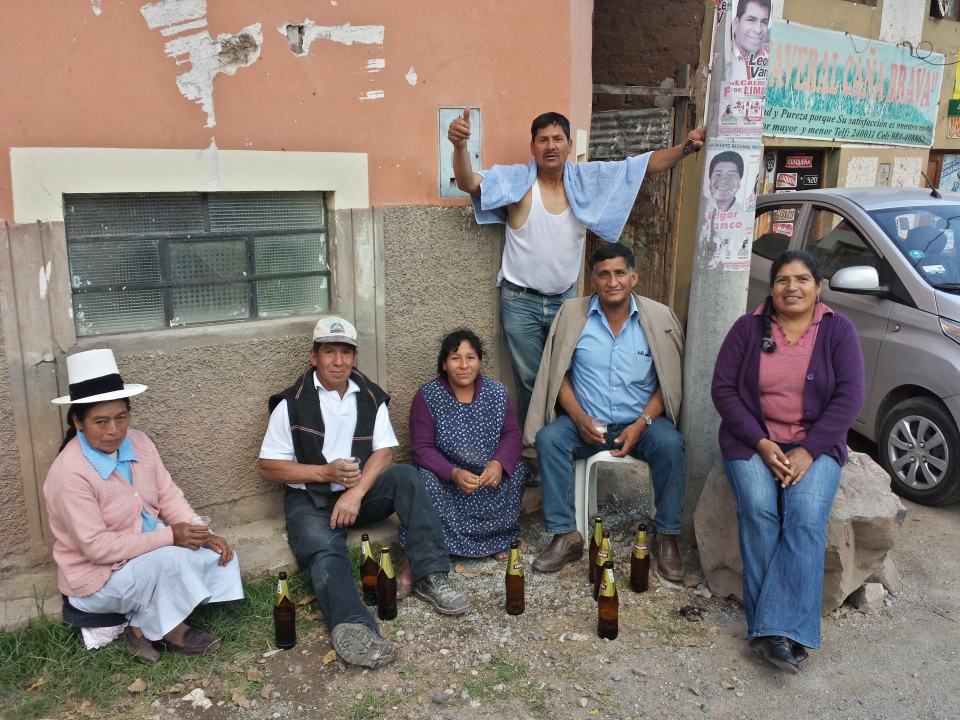
The people that live in the mountains are noticeably different, in look, in dress, and in how they act. They’re shorter, have different faces, dress differently, and they're generally more quiet and reserved, though friendly to visitors, at least in my experience. I find it easier to interact with them.
Just as it was getting dark, I was taken over to the ruins and pitched my tent. The fact that I was camping on ancient Incan ruins was damn cool. In the middle of the night, I had to pee and got out of my tent. The clouds had partially cleared and I got one of the best looks at the night sky I've ever had. I only wish the sky had been entirely clear.
Before leaving in the morning, I spent more time walking around the ruins. What impressed me most is the fact that they didn't have any mortar. The rocks were cut and stacked so precisely that without anything holding them together, they were still perfectly in place centuries later. I made a mental note to never play Jenga against an Incan.
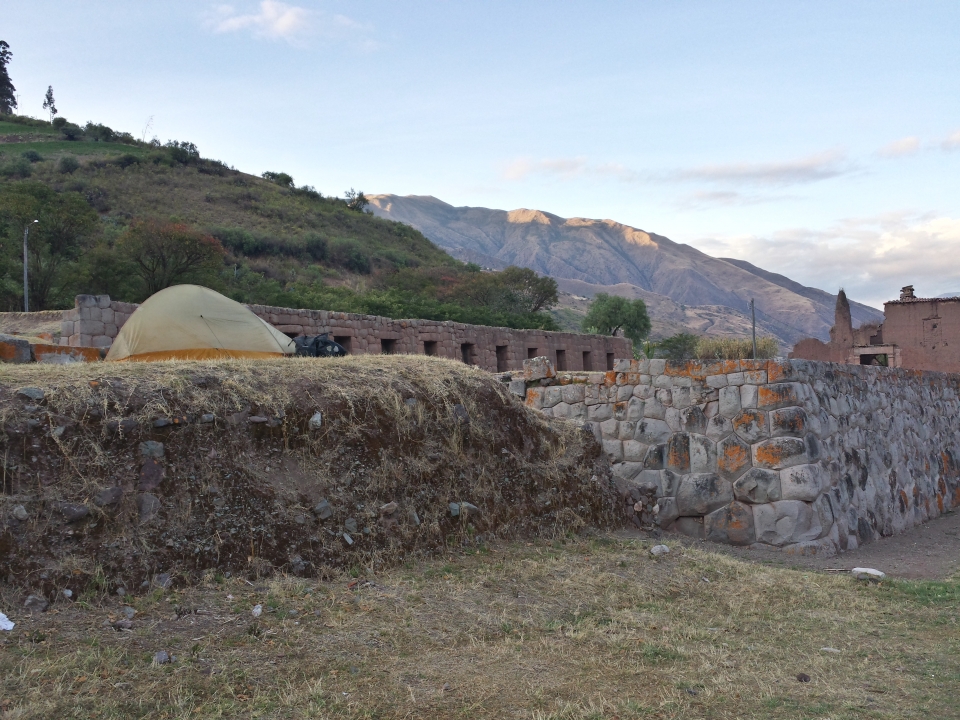
Much like the day before, I had to climb for a few hours to start the day. Only 25 km this time, not 35 km. The ensuing downhill wasn’t as epic, or as long, and flattened out on some plains after a while.
A little more than halfway to Cusco, I stopped at a gas station to use the bathroom. Wanting to know what was up ahead, I asked the attendant,
"I'm going to Cusco. Are there mountains? Will I climb?"
"No, it's flat. All flat."
This guy, like many in Latin America, was full of shit. I had to climb one hell of a hill to get to Cusco, then finally had a steep descent into town.
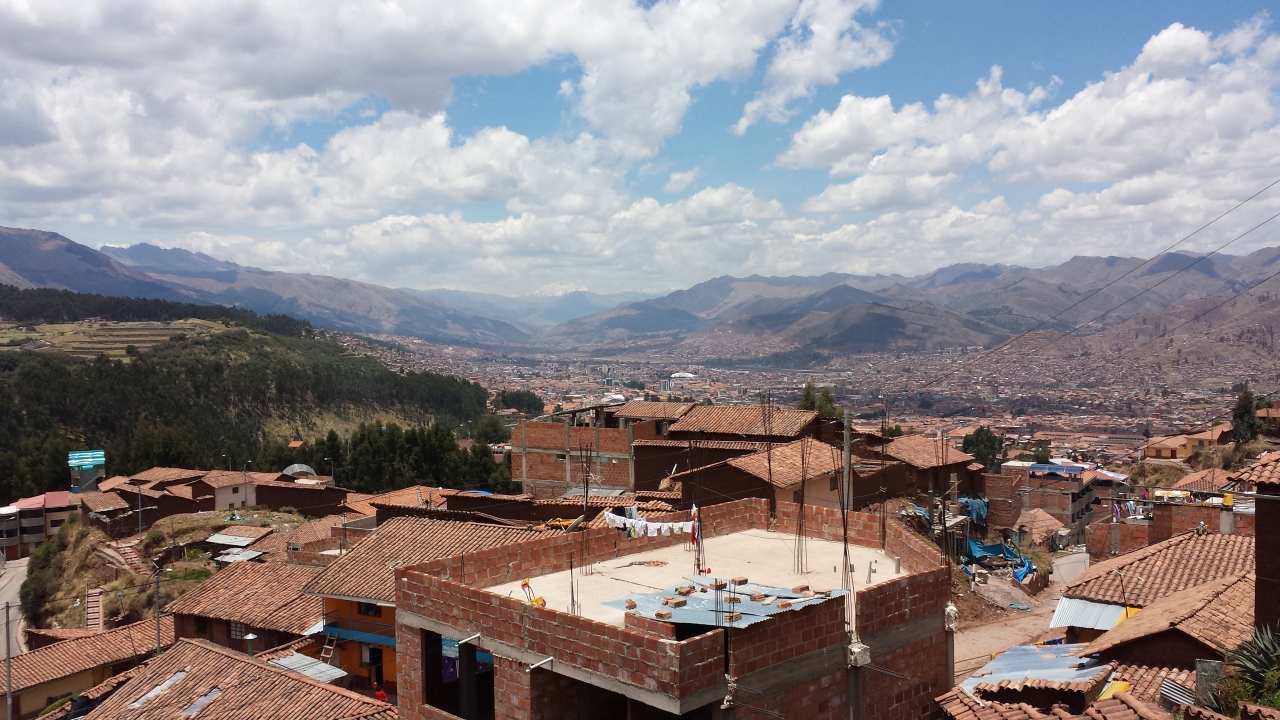
Cusco is a beautiful city, though difficult to bike through. The colonial Spanish architecture and city design leads to narrow one-way roads, paved with cobblestones or uneven bricks, and sidewalks that are too small for two people to walk past each other. In addition, the road layout looks like someone dropped a bunch of raw spaghetti sticks on the ground. You lose your sense of direction quickly, and at the end of each block, you're usually forced to turn in a direction that you didn't want to go. I got off Valeria and walked the last few km to my hostel.
The hostel was a friggin' nice place, for cheap, with free breakfast and WiFi*
*It barely worked at all, and I wound up going to an internet cafe later. The few bucks was worth not dealing with the hassle.
It was only a little past noon, so I decided to go explore the city. My hostel was located in the historic center of town, only a few blocks from the main plaza. Cusco was probably the first medium-to-large city in South America that made me think "Yeah, I like this place." This was more like it. This is what I had in mind for Latin America.
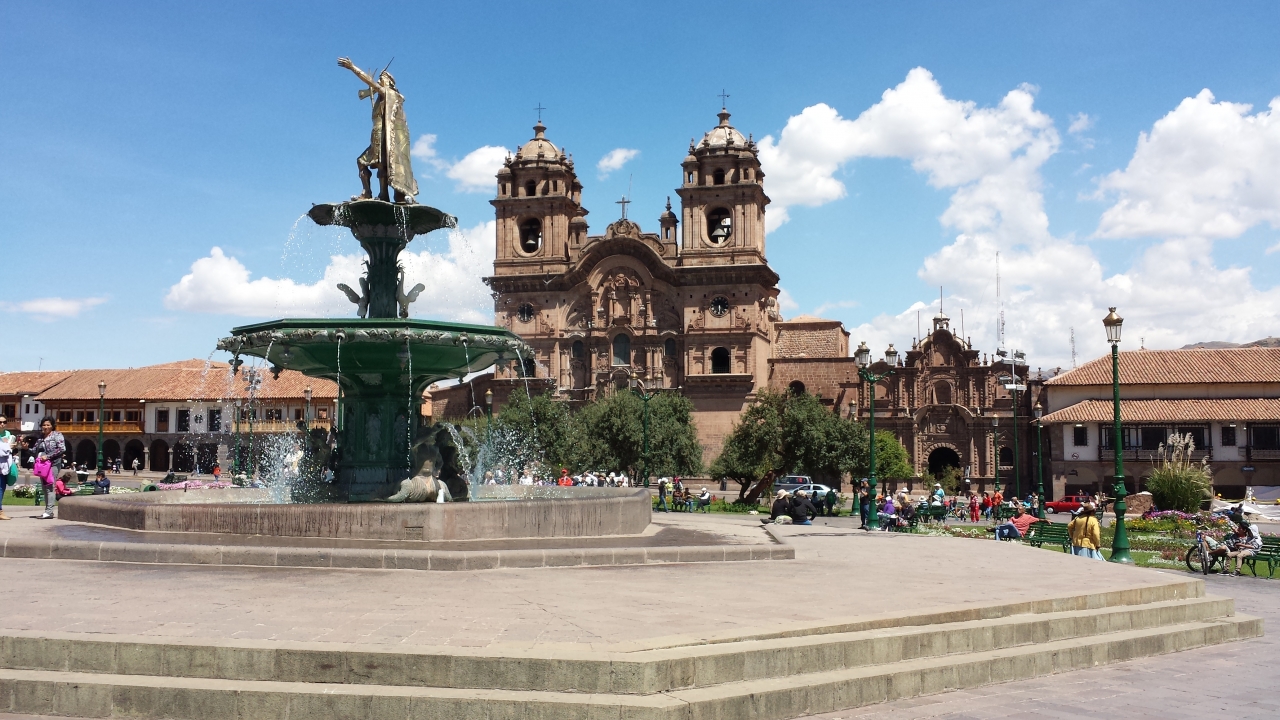
I'd been seeing rainbow flags for the past few days. I found that peculiar; Latin America has a macho culture and homosexuality is very, very looked down upon. The idea that there would be so many gay pride flags around, or any at all, seemed unthinkable. Then I saw one on a municipal building, and I knew it had to mean something else. I finally asked someone what the flag meant, and I was told it's the Incan flag.
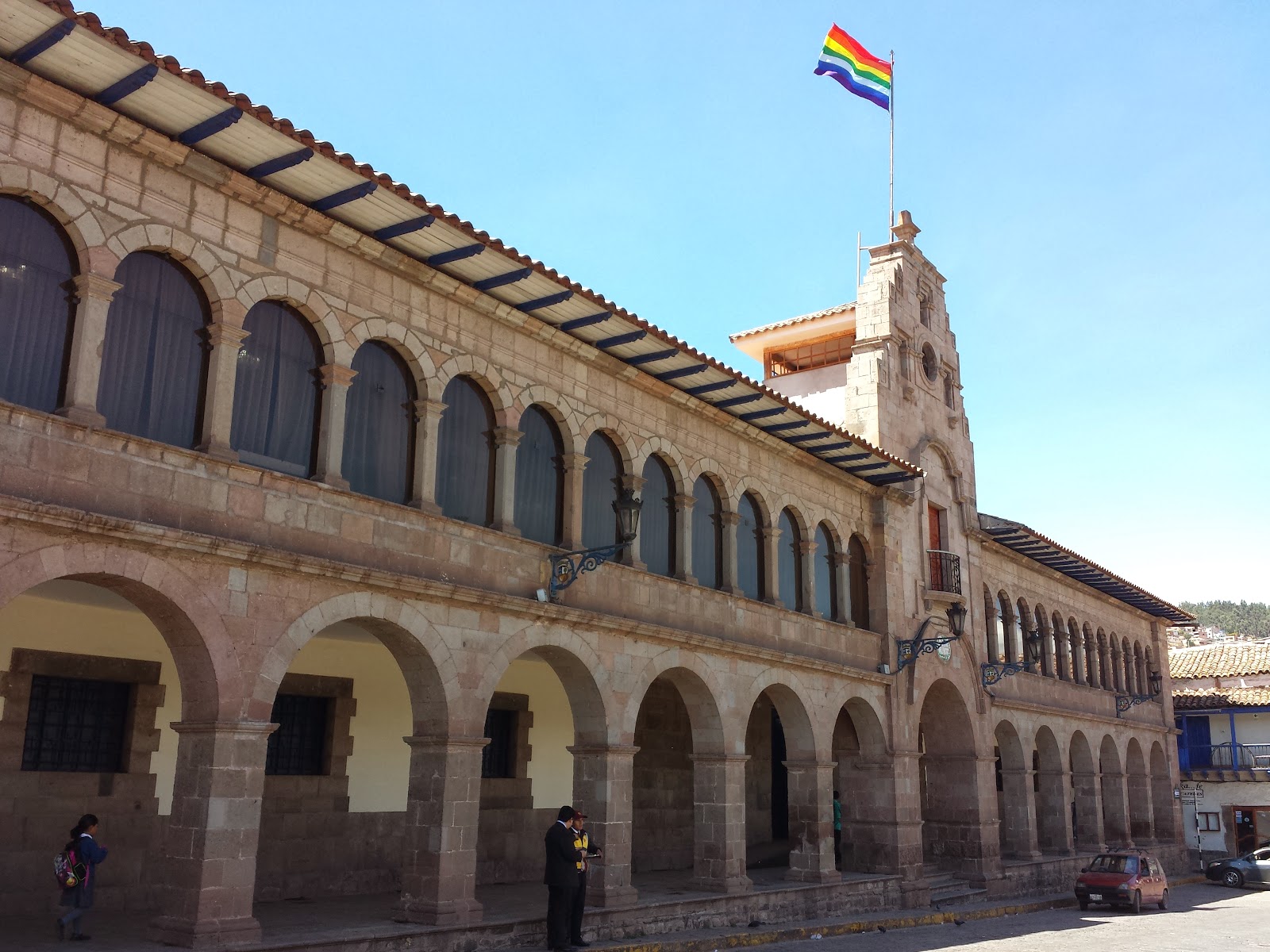
Knowing this was probably my last chance to find brake pads in South America, I went to a couple different high-end mountain bike shops, including one that had been recommended by the two downhill mountain bikers the day before. Neither had them. I didn't want to risk having my brakes fail in the Andes, especially now that I was on roads much less travelled, and in cities much smaller. I decided to buy new brakes.
They're much more expensive than simply buying pads, of course, but now I'm set. These are the brakes I always should've had, in fact, the brakes I specifically asked for from my bike shop three months in advance, and they still gave me the wrong ones. They're by the same brand, a similar design, almost the only thing different is the much more common and replaceable pads. Bigger pads too, so they'll work even better and wear down slower. I still can't imagine what Richardson Bike Mart was thinking.
I arose the next morning at 3:20 AM to catch my 3:45 shuttle, which arrived at 4:15. Six hours later, I was at Machu Picchu.
There are different ways to get to Machu Picchu, but its remoteness and the ruggedness of the surrounding terrain makes all of them difficult. The fastest, at least from Cusco, is to take a bus, then a train, then another bus. I chatted with a Dutch guy next to me on the train. He was a professional dancer, and was paying his way through this trip with performances.
I was put into a small group with an English-speaking tour guide. We got the chance to walk around most of the ruins over the next hour. It was overwhelmingly crowded, at least by my standards. I was told later that in summer, there are twice as many visitors per day.
Machu Picchu was built somewhere around 1450, then abandoned only 100 years later for reasons unknown. It was never a major city, but rather was mostly a place of worship and for priests to live. The Inca Trail connected Cusco, the Inca capital, to Machu Picchu, and takes 3-4 days to walk. When the Spanish arrived, they never found Machu Picchu, and it remained undiscovered by Europeans until 1911, when an American history professor found it, almost by accident. As a result, it remained untouched for centuries, as opposed to most cities, which the Spanish took over and rebuilt in colonial style, complete with cathedrals and streets.
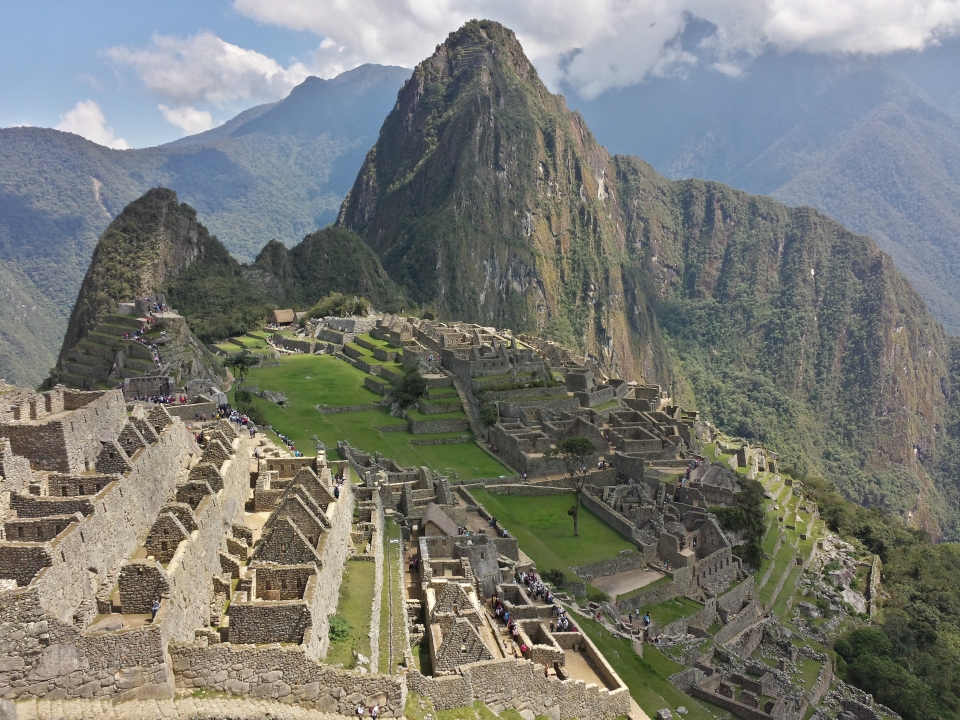
I imagine finding this place, when you didn't know it was there, was something like a religious experience. The modern discoverer, Hiram Bingham, took over 12,000 photographs. That's a lot even by today's standards, with digital cameras and smartphones. In 1911, film was used, and it wasn't cheap. Flashbulbs were good for one use. And taking an exposure could take a long time. 12,000 photos at that time would probably be like taking ten times as many today, if not more.
Bingham also took thousands of artifacts home with him, and to this day, the Machu Picchu museum is in the United States. This remains a point of contention between the United States and Peru.
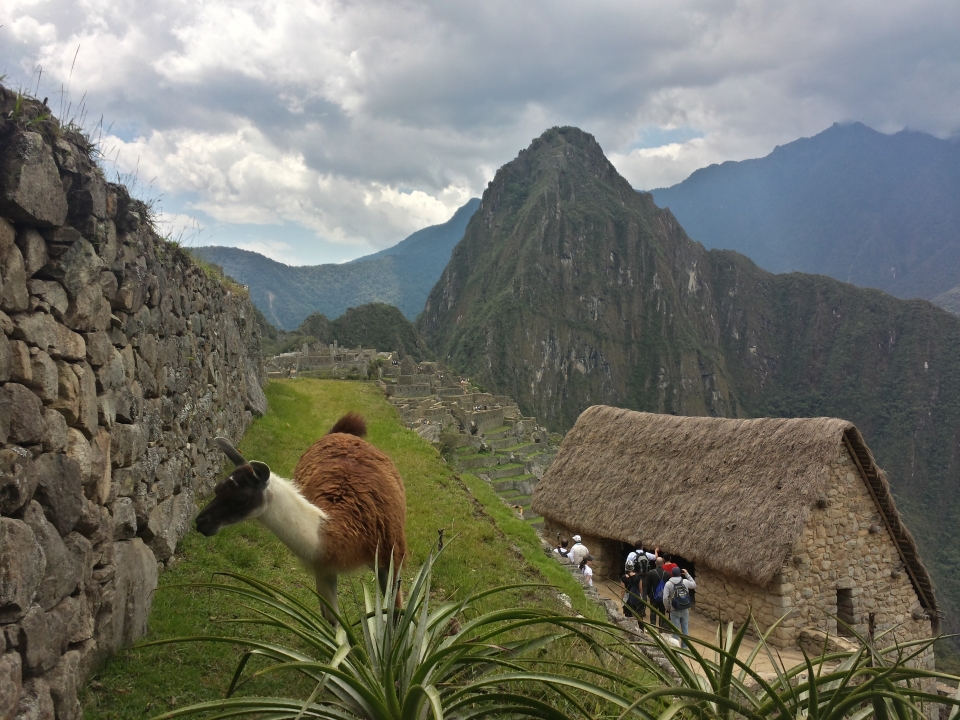
It was an unusually sunny day. We were lucky. I mostly hung around with a couple Canadians in our group, and after our tour, one of the Canadians and I hiked up a hill for a broader, more panoramic view of the area. It was impressive how far the ruins extended. This wasn’t even a major city, and yet we could hike almost an hour away from the main settlement and continue seeing structures.
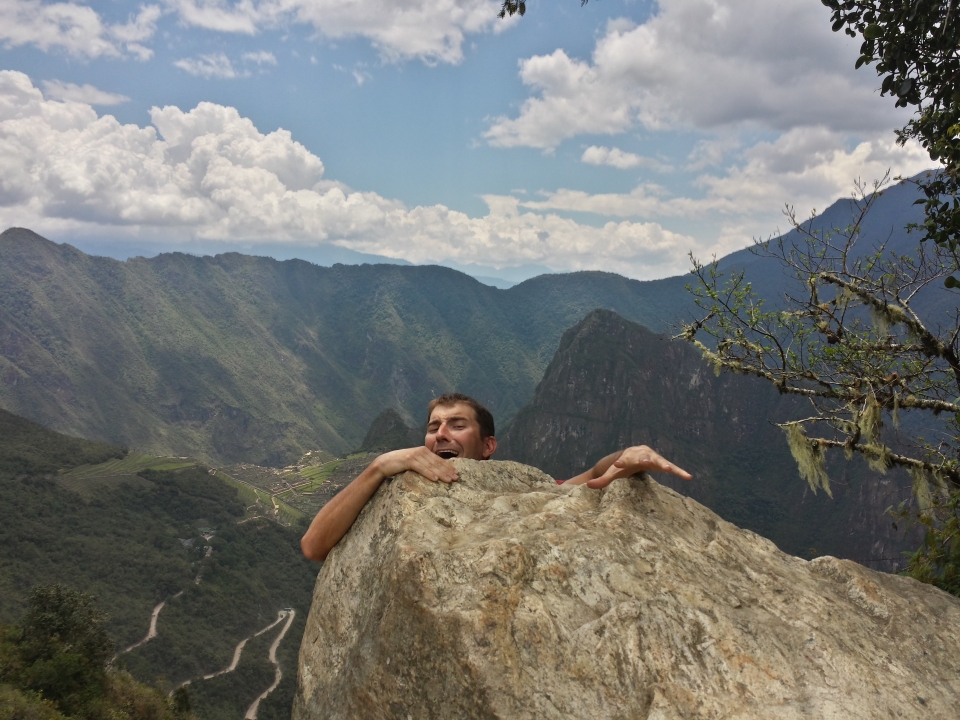
The line for the bus back down to the train was long enough that I decided to hike down instead. I think it took less time, and I got to walk through the jungle. It’s strange, when you think jungle, you don’t think of mountains. And when you think mountains, you don´t think of the jungle. But here they were together.
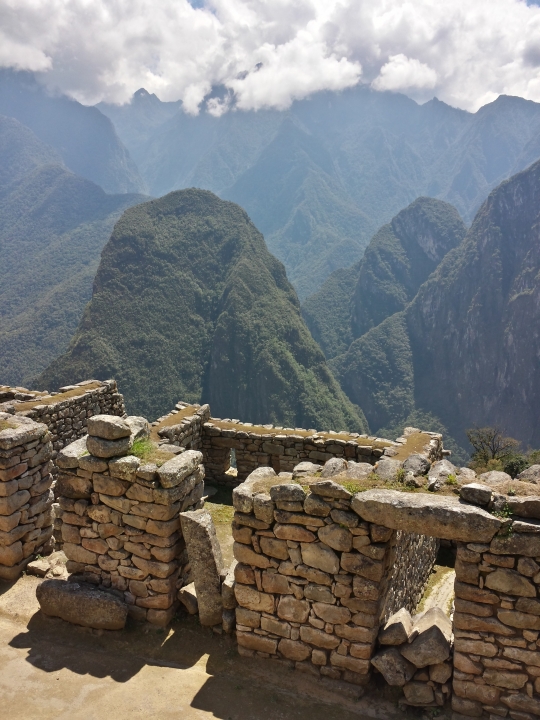
I finally arrived back in Cusco at 7:00 PM, took care of a few things with Valeria, then went to bed exhausted. All the bus and train rides were bumpy enough that even I couldn’t fall asleep on them. There were still a few errands I wanted to do the next day. I went ahead and took another day off, knowing that attacking the Andes again would be much easier that way.
I wound up spending about five hours in an internet cafe, almost all of which was to update my blog. I also finished my most recent book, Alive. Seemed appropriate to read as I cross the Andes. And now I'll always be able to think that I don't have it as bad as those guys. Though I can't help but point out I spent a few nights higher in altitude than they did, and I'm crossing higher passes, too.
At one point, I thought to myself, “That doesn't sound so bad. They get to hang out and relax all day, and they have an almost unlimited food supply, get to eat as much as they want." And then I thought maybe I should treat myself to a day off and a full meal more often.
I went to the grocery store and bought a few staples: bread, powdered milk, oatmeal, yogurt. I thought of getting something I could heat up that night, since the hostel had a kitchen with a microwave. I found a can of beans: 7 soles, about $2.50. I'm used to cans of beans that cost less than $1. I passed. A bag of nuts, small enough to eat all at once, cost about the same.
On my way out, I passed an area off to the side where there was rotisserie chicken. The combo was 1/4 chicken, a side of fries, and an amount of fried rice the size of a cantaloupe. Price: 7.5 soles, about $2.70.
What have I been doing all this time? I bought a hot meal for the price of a can of beans and ate my fill that evening.
Upon this realization, I've decided to stop buying a few of my more expensive staples (like nuts) and get a hot meal more often, maybe even once a day. I think it'll be cheaper, not to mention more fun, and I bet it'll balance out my food groups a little better. Variety in your diet is a good thing.
I can't end this post without mentioning a few people I met at the HI hostel, even if I've forgotten a few names, or can't spell them.
One was a guy from Fairbanks, of all places, close to my parents' age. He has been to South America more than once, as well as Africa and the Middle East, but to the best of my knowledge, he didn't speak a lick of Spanish.
Yimi, from Spain, was in my bunkroom. Altitude sickness had gotten hold of him and he spent the majority of a full day in bed. I gave him a Nuun tab, and he offered his place in Malaga, if I pass through there in spring.
And finally, the four Germans: Dominique, Steph, and two others whose names escape me. They were all maybe 25-28 years old and had been traveling together for a few weeks. The gentlemen were about to return home, but the two ladies, already busing across South America for several months now, would continue for a few months more. They had headed up from the south, almost exactly where I was going, and encouraged me to write to them for tips. I plan to take them up on it!
If you're going to South America, you could do a lot worse than Cusco. I generally like southern Peru a lot more than the northern half. Or maybe I like the mountains in Peru a lot more than the coast. Either way, things have been a lot better lately, and I always like to think that the best is yet to come.
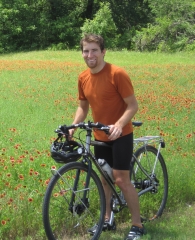


 June
June

